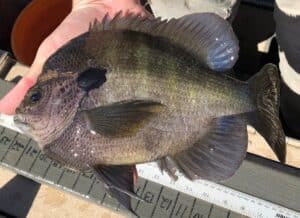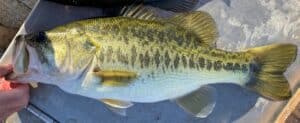Stocking fish in community ponds from Magnolia Fisheries
Community ponds provide a valuable angling resource for fishermen of all ages. Stocking fish is how most community ponds maintain their fish population. Though you must obtain a state fishing license if you are age 17 or older when fishing in public water, a state issued license is not required on privately owned community water. Most of these small ponds already contain bass, bluegill, and catfish which are ready to jump on the hook. If not, your pond can be stocked with fingerling fish which can grow to catchable size within a year.
Stocking fish is relatively inexpensive, and if done correctly, will produce a self-sustaining population that should never require restocking. Fish stocking is seasonal and should be done between November and May. The most common species of gamefish stocked in urban ponds are largemouth bass, coppernose bluegill, and channel catfish. In order to encourage healthy growth, it is best to start out with a balanced population of predator and prey species. Therefore, it is critical to stock fish species in the right numbers and ratios.

Male Coppernose Bluegill
How many and what kind of fish should be stocked in your pond?
Recommended stocking rates are based on the surface acreage (NOT the depth) of a pond. It is difficult to maintain a balanced population of largemouth bass in ponds less than 1 acre. In this case, we recommend stocking channel catfish and coppernose bluegill only. Catfish and bluegill provide easy angling opportunities for children and inexperienced anglers. Supplementing their natural diet with a floating fish food will increase their growth exponentially.
If your pond is greater than 1 acre, then you can stock largemouth bass, coppernose bluegill, and channel catfish (catfish optional). This species mix will provide a quality fishing experience with the least amount of management involved. The standard stocking rate is 50 bass, 500 bluegill, 10 pounds fathead minnows, and 100 channel catfish per surface acre. Here in North Texas, the growing season for fish is fairly long. Therefore, these fish will grow to quality size very quickly if they have an adequate supply of food. For largemouth bass, this means high numbers of bluegill or other forage species.

Largemouth Bass
When can you start fishing in a newly stocked pond?
Typically, you can expect your pond to start producing catchable size fish approximately 1 year after stocking. This process can be sped up by stocking with larger, advanced growth fish. However, stocking adult fish is limited by availability and cost. Whatever you choose, it is important that all fish are in the same growth stage when released into the pond. Mixing fingerlings with advanced growth fish will quickly result in an unbalanced population. Never stock fish caught from public lakes; as this can introduce disease and viruses into the population.
Magnolia Fisheries provides fish stocking for the entire Dallas/Fort Worth area. We also provide adult channel catfish for kid’s fishing events hosted by residential communities and city park departments. Call us today to jumpstart your own private honey hole!
For more information: Magnolia Fisheries Fish Stocking
